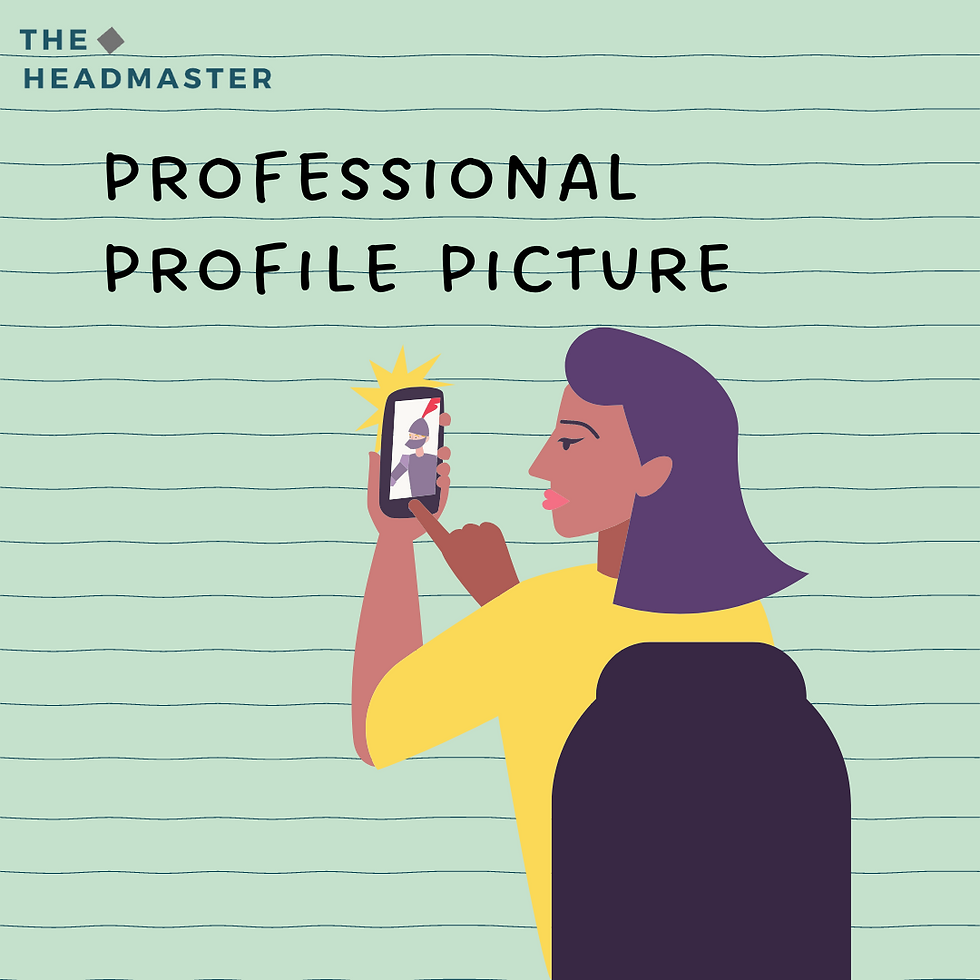What an Ideal LinkedIn Profile Should Look Like?
- The Headmaster Counsulting

- Jul 3, 2023
- 3 min read
In today's digital age, social media platforms play a crucial role in personal branding and networking. Among these platforms, LinkedIn stands out as a professional hub where individuals can showcase their skills, accomplishments, and aspirations to potential employers, mentors, and collaborators. For college applicants, having a compelling LinkedIn profile can be a game-changer, as it offers a unique opportunity to present themselves beyond the traditional application materials. Let’s delve into the key components of an ideal LinkedIn profile for college applicants, providing a step-by-step guide to help you maximize your chances of success.
Professional Profile Picture

The first impression matters, and your profile picture is the initial glimpse employers and admissions officers have of you. Choose a high-quality, professional headshot that reflects your personality while maintaining a polished and approachable demeanor. Dress appropriately, and ensure that the background is clean and distraction-free. A friendly smile can also go a long way in creating a positive and engaging impression.

A Captivating Headline
The headline appears right below your name and should succinctly summarize your professional aspirations and achievements. Instead of simply stating your current education status, consider incorporating your unique value proposition or areas of interest. For example, instead of "College Applicant," opt for a headline like "Driven Student Passionate about Environmental Sustainability and Social Impact."

An Engaging Summary
The summary section allows you to provide a comprehensive overview of your skills, experiences, and goals. Craft a compelling narrative that highlights your strengths and aspirations, and use keywords relevant to your desired field or industry. Share concise anecdotes or accomplishments to showcase your unique qualities and achievements. Remember to keep the tone professional, yet authentic and personable.

Detailed Education Section
In the education section, provide comprehensive information about your academic journey. Include the name of your school, your expected graduation date, and your major or field of study. Highlight any honors, awards, or notable projects you have undertaken during your time in college. If relevant, mention relevant coursework or research experiences that demonstrate your passion and expertise.

Showcasing Relevant Experiences
The experience section is an excellent opportunity to display your professional growth and skills. Include internships, part-time jobs, volunteering experiences, and extracurricular activities that highlight your transferable skills and achievements. Emphasize your responsibilities, notable accomplishments, and the impact you made in each role. Use action verbs and quantifiable results whenever possible to provide a clear picture of your contributions.

Skills and Endorsements
Identify and list the key skills you possess that are relevant to your desired field or industry. This section allows you to highlight your strengths and expertise. Additionally, seek endorsements from professors, supervisors, or colleagues who can vouch for your abilities. Connect with individuals who can provide a genuine assessment of your skills and request endorsements to enhance your credibility.

Showcasing Projects and Publications
If you have been involved in research projects, published articles, or creative endeavors, create separate sections to highlight these accomplishments. Include brief descriptions and links to your work, if applicable. Demonstrating your intellectual curiosity and dedication to your chosen field will impress college admissions officers and potential employers.

Recommendations and Connections
Request recommendations from professors, mentors, or supervisors who can provide meaningful insights into your character, skills, and work ethic. Recommendations serve as valuable endorsements and can add credibility to your profile. Additionally, actively seek connections with professionals, alumni, and peers in your desired field. Engage in conversations, join relevant groups, and participate in industry-related discussions to expand your network.

Developing Interests Section
The "Interests" section of the profile plays a crucial role in highlighting your diverse range of interests and demonstrating your well-roundedness. Include interests that align with your academic or career goals. For example, if you're interested in pursuing a degree in computer science, mention your involvement in coding clubs, hackathons, or software development projects. This shows your enthusiasm for the field and your active engagement in activities related to your academic interests. Don't be afraid to showcase your personal interests and hobbies that may not directly relate to your academic or career goals. These can provide insights into your personality, values, and unique qualities.
Crafting an ideal LinkedIn profile for college applicants is a strategic process that involves thoughtful planning and curation. By optimizing each section with compelling content, showcasing relevant experiences, and building a robust network, you can leverage this powerful platform to enhance your college application and pave the way for future professional opportunities. Remember to keep your profile updated and engage with your connections regularly to foster meaningful relationships within your chosen field. Good luck in your journey toward a successful college application and professional growth!

If you’re looking to apply to international universities or exploring overseas higher education options, The Headmaster Consulting can help you narrow your selection while keeping track of your requirements for your financial needs while tracking overseas education options. If you want personalized roadmaps to your dream universities, get in touch with our consultants to help you build your profile and applications.




Comments